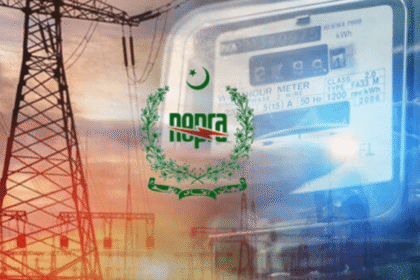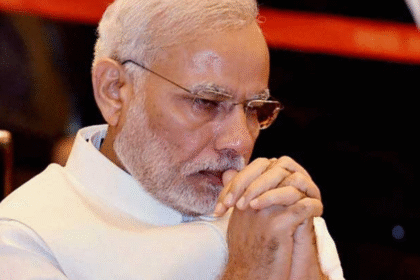In a decisive move to address the persistent issue of smog that has plagued the region, the Punjab government has initiated a crackdown on smoke-emitting vehicles. This initiative is part of a broader strategy to mitigate the effects of air pollution, which has severe implications for public health, environmental quality, and overall quality of life. With the onset of winter, when smog levels typically rise due to a combination of weather conditions and pollution sources, the government’s actions come as a necessary intervention to protect the health of its citizens.
- The Smog Crisis in Punjab
- Key Features of the Crackdown
- The Role of Vehicle Emissions in Air Pollution
- Health Implications of Air Pollution
- Environmental Impact of Smog
- Community Response and Support
- Government Initiatives Beyond the Crackdown
- The Role of Technology in Monitoring Emissions
- Long-Term Goals for Air Quality Improvement
- A Collaborative Effort for Cleaner Air:
The Smog Crisis in Punjab
Smog has become a seasonal crisis in Punjab, particularly in urban areas like Lahore, where it can significantly affect visibility and air quality. The phenomenon is characterized by a thick haze that envelops cities, often leading to health advisories, traffic disruptions, and school closures. The main contributors to this smog include industrial emissions, vehicular pollution, and crop burning in the surrounding agricultural areas.
Studies have linked air pollution to a host of health issues, including respiratory diseases, cardiovascular problems, and increased mortality rates. Children, the elderly, and individuals with pre-existing health conditions are particularly vulnerable. In response to these pressing concerns, the Punjab government is taking proactive measures to address the root causes of smog, with vehicular emissions being a significant focus.
Key Features of the Crackdown
The crackdown on smoke-emitting vehicles is characterized by several key features aimed at reducing air pollution effectively:
- Enhanced Inspections: The Punjab government has mobilized traffic police and environmental protection agencies to conduct rigorous inspections of vehicles across the province. These inspections will target both public and private transport, focusing on older vehicles that are more likely to emit excessive smoke.
- Fines and Penalties: Vehicles found to be emitting smoke beyond permissible limits will face substantial fines. This approach serves as both a deterrent and a means to encourage compliance among vehicle owners.
- Awareness Campaigns: In addition to enforcement measures, the government plans to launch awareness campaigns to educate the public about the harmful effects of vehicular emissions. This initiative aims to encourage responsible vehicle usage and promote cleaner alternatives.
- Collaboration with Local Authorities: The crackdown will involve collaboration with local authorities, municipal bodies, and civil society organizations to ensure a comprehensive approach to tackling air pollution. This collaboration is essential for monitoring progress and ensuring that the measures are effectively implemented.
The Role of Vehicle Emissions in Air Pollution
Vehicular emissions are one of the primary contributors to air pollution in urban areas. Cars, trucks, and buses release a variety of pollutants, including carbon monoxide, nitrogen oxides, particulate matter, and volatile organic compounds. These substances not only degrade air quality but also contribute to the formation of ground-level ozone and smog.
In Punjab, the increasing number of vehicles on the road, coupled with inadequate emission standards and enforcement, has exacerbated the smog crisis. Older vehicles, particularly those that run on diesel, are major culprits due to their higher emissions of particulate matter and other pollutants. As a result, addressing vehicle emissions is crucial for improving air quality and protecting public health.
Health Implications of Air Pollution
The health implications of air pollution, particularly in relation to smog, are profound. Research has consistently shown that exposure to polluted air is linked to a range of health problems, including:
- Respiratory Diseases: Airborne pollutants can cause or exacerbate conditions such as asthma, chronic bronchitis, and chronic obstructive pulmonary disease (COPD). Children are especially vulnerable, as their lungs are still developing.
- Cardiovascular Issues: Studies have demonstrated a clear association between air pollution and cardiovascular diseases, including heart attacks and strokes. Pollutants can contribute to the development of atherosclerosis and other cardiovascular conditions.
- Premature Mortality: Long-term exposure to polluted air can increase the risk of premature death due to respiratory and cardiovascular diseases. According to estimates, air pollution is responsible for millions of premature deaths worldwide each year.
- Mental Health Effects: Emerging research suggests that air pollution may also be linked to mental health issues, including anxiety and depression. The stress of living in a polluted environment can contribute to psychological distress.
Environmental Impact of Smog
Beyond its health implications, smog has a detrimental effect on the environment. The pollutants that contribute to smog can harm ecosystems, affect water quality, and damage vegetation. For example:
- Acid Rain: Pollutants such as sulfur dioxide and nitrogen oxides can lead to acid rain, which can harm aquatic ecosystems and soil quality. Acid rain can disrupt nutrient availability and harm plant life.
- Visibility Reduction: Smog significantly reduces visibility, affecting transportation safety and disrupting daily activities. This can have economic repercussions, particularly in industries reliant on transportation and logistics.
- Climate Change Contribution: Many pollutants that contribute to smog, such as black carbon, are also potent climate forcers. Addressing these emissions can therefore have positive implications for climate change mitigation.
Community Response and Support
Community support for the crackdown on smoke-emitting vehicles is vital for its success. Residents, civil society organizations, and health advocates are expected to play an active role in promoting awareness and encouraging compliance. Engaging communities through workshops, seminars, and social media campaigns can help educate the public about the benefits of reducing vehicular emissions and adopting cleaner transportation options.
The Importance of Sustainable Transportation Solutions
While the crackdown on smoke-emitting vehicles is a crucial step, it must be complemented by broader efforts to promote sustainable transportation solutions. This includes:
- Public Transportation Improvements: Investing in public transportation systems can reduce the number of vehicles on the road, leading to lower emissions. Expanding bus and train networks, along with promoting their use, can significantly alleviate congestion and pollution.
- Encouraging Non-Motorized Transport: Promoting walking and cycling through the development of safe pedestrian pathways and cycling lanes can contribute to cleaner air. Initiatives to encourage non-motorized transport should be integrated into urban planning.
- Adoption of Electric Vehicles: Transitioning to electric vehicles (EVs) can dramatically reduce emissions from the transportation sector. The government can incentivize the adoption of EVs through subsidies, tax breaks, and infrastructure development.
Government Initiatives Beyond the Crackdown
The crackdown on smoke-emitting vehicles is just one component of the Punjab government’s broader strategy to combat air pollution. Other initiatives include:
- Regulating Industrial Emissions: Strengthening regulations on industrial emissions is critical for reducing overall pollution levels. The government is expected to enforce stricter emission standards for industries and enhance monitoring mechanisms.
- Promoting Clean Energy: Transitioning to renewable energy sources can significantly reduce the reliance on fossil fuels and decrease overall emissions. The Punjab government has initiated programs to promote solar energy and other clean energy technologies.
- Awareness and Education Campaigns: Ongoing efforts to raise awareness about the health and environmental impacts of pollution are essential. Educating the public about the importance of clean air and sustainable practices can drive behavioral change.
The Role of Technology in Monitoring Emissions
Advancements in technology can play a significant role in monitoring and managing vehicle emissions. The Punjab government can leverage innovative solutions to improve its enforcement capabilities.
- Emission Testing Equipment: Implementing state-of-the-art emission testing equipment at inspection stations can ensure accurate assessments of vehicle emissions. This technology can help identify non-compliant vehicles more effectively.
- Mobile Applications: Developing mobile applications that allow citizens to report smoke-emitting vehicles can enhance community involvement in the crackdown. Such apps can facilitate real-time reporting and enable authorities to respond promptly.
- Air Quality Monitoring Stations: Expanding the network of air quality monitoring stations throughout Punjab can provide valuable data on pollution levels and sources. This information can inform policy decisions and enhance public awareness.
Long-Term Goals for Air Quality Improvement
While the immediate focus of the crackdown is on reducing smoke emissions from vehicles, the Punjab government must also set long-term goals for air quality improvement. This includes:
- Establishing Air Quality Standards: Developing and implementing stringent air quality standards is essential for protecting public health and the environment. These standards should align with international best practices and be regularly reviewed and updated.
- Creating a Comprehensive Air Quality Management Plan: A holistic approach to air quality management should encompass multiple sectors, including transportation, industry, and agriculture. Such a plan would facilitate coordinated efforts to address pollution comprehensively.
- Engaging Stakeholders: Collaborating with various stakeholders, including government agencies, non-governmental organizations, and the private sector, is crucial for effective air quality management. Stakeholder engagement can foster a sense of ownership and shared responsibility in addressing pollution.
A Collaborative Effort for Cleaner Air:
The Punjab government’s crackdown on smoke-emitting vehicles represents a critical step towards improving air quality and protecting public health. However, addressing the issue of air pollution requires a collaborative effort from all segments of society. By engaging communities, promoting sustainable transportation, and implementing effective policies, Punjab can work towards a cleaner, healthier future for its citizens.
#Punjab #Smog #AirPollution #SmokeEmittingVehicles #Health #Environment #SustainableTransportation #PublicHealth #GovernmentInitiatives #CleanAir #VehicleEmissions #SmogCrisis







